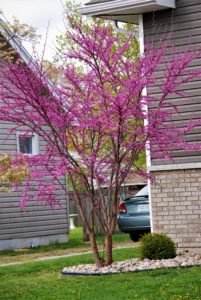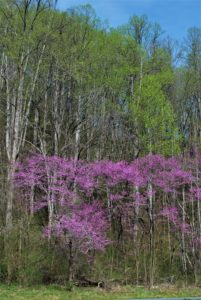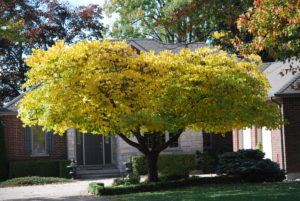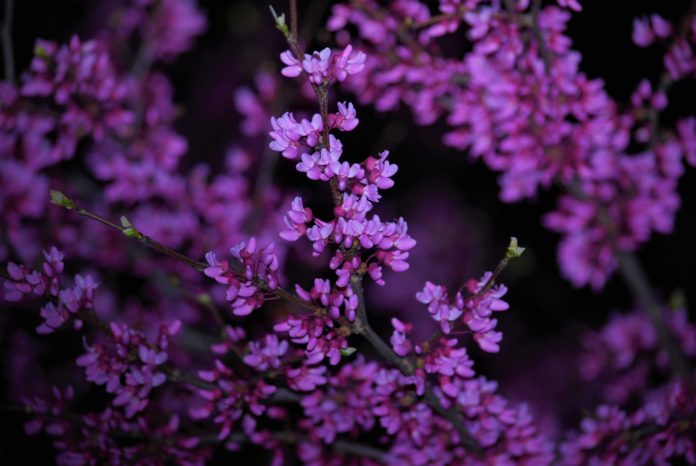By Larry Cornelis – Sydenham Field Naturalists

To me, this is one of the most beautiful flowering ornamental trees.
The show is delicate and airy with pink flowers all along the stems, blooming before the leaves unfold/develop.
From a distance, especially just before the flowers actually open, the stems look draped in red (hence the name).
As the blooms unfold the overall colour turns more to a rose-pink but there is variability in different specimens,
some looking dark pinkish/red and others light pink.
Redbud is in the legume family so the flowers are shaped like pea/bean flowers and after blooming it bares seed pods that look like pea pods.
The scientific/Latin name for redbud is Cercis canadensis, meaning from Canada, which is a misnomer.
Only one specimen was ever found growing in Ontario.

That tree was growing on the south shore of Pelee Island at the Fish Point Nature Preserve.
Canadian botanist John Macoun collected a sample for preservation as an herbarium specimen in 1892.
That sample still exists at the Heritage Centre on Pelee Island today.
Many redbuds, of Michigan sourced stock to guarantee their hardiness, have been planted on Pelee and make a great show in spring.
When buying a redbud, be sure to know the provenance (place of origin) as trees from the south (Tennessee) will suffer in cold winter weather in southern Ontario.
Redbuds are highly prized and planted as an ornamental feature in the fanciest botanical gardens from Leamington to Niagara on the Lake and through many U.S. states.
But the real treat is to drive through Kentucky, Virginia, Tennessee or North Carolina in spring where they put on a spectacular show along forest edges and fencerows.
A better scientific name would be Cercis virginiana.
Redbuds are small broad deciduous trees, rarely reaching beyond 20 feet tall.
Often specimens grow with a few to several trunks but they can be pruned into a single trunk tree form.
They will grow in shade but bloom better in more sunlight.
They don’t qualify as shade trees but make a good choice for around patios and decks where you can sit under their flowery and leafy branches.
Their dark bark develops a scaly cracked pattern that reveals a rusty red inner bark.
They have lovely heart-shaped leaves that turn bright yellow in autumn.
Redbuds can start blooming at relatively young age of four to five-years-old.

A 40 to 50-year-old redbud is quite old for this species as they are not long-lived.
The flowers are insect pollinated and provide a good source of nectar for spring pollinators.
The winter of 2014/15 was a cold one with temperatures reaching -25 Celsius for numerous nights during a polar vortex.
Many redbuds were injured and numerous trees died.
We lost three of our four good sized trees to that cold winter.
The fourth was unaffected and is growing nicely today.
There are other species such as the California redbud and a few species native to Europe and Asia.
Redbuds are often on lists of native trees for Southern Ontario but as I stated previously, that’s a bit misleading.
On the other hand, they grow in Michigan north to Grand River and Lansing on parallel latitudes with Southern Ontario so maybe we should be planting them more often.
You’ll be glad you did.
They are blooming now.
Check out the display along Margaret Avenue (north side) in Wallaceburg.
For more details, visit: http://www.sydenhamfieldnaturalists.ca/
















